shimmer or rippleㆍthey/anyㆍ20ㆍcanadianㆍvocaloid cover artist
Don't wanna be here? Send us removal request.
Text
About Tanjiro Taidana - An Important PSA + Rant
TRIGGER WARNING: THIS POST COVERS GR00M1NG AND P3D0PH1L1@.
Hello, Shimmer/Ripple/that one Fukase tuner here.
I know I said what my next post will be about, but this is way more important than vocal synths.
If you have been on VocaTwitter or Discord in the past week, you may know what this is about. If you are unaware of what is going on, sit back and relax, and have some eye bleach on standby.
I decided to make this post to spread further awareness about this ongoing controversy, especially since I have not seen a single post on Tumblr about it. I am sure there are somewhere, my dumbass probably just missed them.
Now, without further ado, let us dive right in.
"Who is Tanjiro Taidana?"
First things first, he is fortunately not the Demon Slayer protagonist, nor is he related to that franchise in any shape or form.
Tanjiro was a popular UTAU cover artist from the Philippines. He used Kasane Teto for 90% of his covers, but has used other Vipperloids as well.
He was well known for various Teto covers, including; "The Lost One's Weeping - Sat1080 Mix", "Usseewa", "Patchwork Staccato", "Abstract Nonsense", "Tokyo Teddy Bear", and "This Fucked Up, Wonderful World Exists for Me". Tanjiro would often make his own UST files and put them on Patreon, and he had a ton supporters.
He was a big deal in the vocal synthesizer community, with a YouTube subscriber count of over 73.5k. People considered him to be the Teto tuner. He inspired a ton of cover artists and producers, including myself. Hell, if it were not for Tanjiro, I would have never gotten into making covers. At the time, I really looked up to him, and he influenced my style a lot.
Now, I wish he never had anything to do with my passion.
"What did Tanjiro Do?"
IN CASE YOU MISSED THE FIRST TRIGGER WARNING, THE REST OF THIS POST CONTAINS MENTIONS OF P3D0PH1L1@ AND GR00M1NG.
On August 21st, 2024, Tanjiro was exposed as a pedophile who groomed a minor for over three years. A former Twindrill Revolution (TDR) server moderator by the name of Vorg created a Google Doc that contains explicit evidence of Tanjiro's actions. I am not going to post any of the screenshots here for obvious reasons, you can see them for yourself: https://docs.google.com/document/u/0/d/1f_OqfpbVOQL9uiCUwN6RA6zF6eV0m_Se-9OavMe8d1s/mobilebasic
If you do not wish to see it, I completely understand and will do my best to summarize what happened.
The victim, who was a minor at the time, posted artwork containing fan-service in TDR, and Tanjiro DMed them. The victim initially assumed that he reached out to warn them about sending suggestive artwork... but instead, he asked for the entire image.
From there, Tanjiro and the victim spoke more, and the groomer made a private server for sharing and making NSFW fanart. They started talking more sexually, and Tanjiro admitted that he would, ahem, "touch himself while looking at their art".
The victim soon developed a crush on Tanjiro, who initially rejected their confession as he was seven to eight years older than them. However, Tanjiro eventually gave in after seeing the victims depressed reaction to his rejection. Then, it escalated from NSFW artwork to sexting and exchanging... nudes.
Eventually, when the victim had turned nineteen, they decided to break up with Tanjiro as they felt as their relationship with him had become cold.
Tanjiro's response.
After being confronted by the moderators of the TDR server, Tanjiro admitted to his actions and released an "apology" Google Doc: https://docs.google.com/document/d/1NUuPwS9LYFNYc6dopa97QybBYd275_xXg0SlAK5zlUM/edit?pli=1
He was banned from the TDR server, which is being rebranded into a Vipperloid community. He privated all of his YouTube videos and put his socials on hiatus. He also deleted his Pateron and released all of the USTs he had up for download on it.
My Opinion
I don't think Tanjiro is actually sorry. His apology was pretty guilt-trippy, and it seemed like it was directed more at his community than the person he hurt. I'm sure if he was never caught red-handed, he would have never come forth with this. It's just to prevent his image from being dragged through the mud/to save face.
I mean, just look at this line that has been getting memed on by VocaTwitter:
"Because of my disgusting attitude, I don't think I would be coming back from making music. Pretty sure even Kasane Teto won't let me sing songs for me anymore."
Why would you even consider to bring up a voicebank in a apology for something so severe? It just goes to show how genuine this guy's words are... not. Is this a joke? Plus, it feels like he's trying to guilt us into forgiving him, like, "I won't return to music production, you guys will lose another cover artist...", as well as, "my mental health is bad, so I did bad things instead of getting help.".
Then there are his USTs... I don't know why he thinks that will soften the overall damage. First off, who wants to use a file made by a pedophile? At least to me, it would feel icky to tune and credit Tanjiro for it. Also, I am certain that there are other existing USTs out there of all of the songs he has covered, so there is not much of a point to receiving them. And once again, a bunch of files will never fix the pain he has caused for the person he groomed. Personally, I believe he is trying to bribe us into forgiving him by releasing his USTs to the public.
Anyways, why did he do this in the first place? What "desires" did this kid evoke in Tanjiro? Is it so hard for adults to like other adults? Based on what he stated in the document, he knew damn well that what he was doing was wrong... yet he went ahead and did it anyway?
No matter how much you apologize for your actions, pedophilia can never be justified. You can never reverse the damage and trauma you have caused to the victim. This person looked up to you a ton, and you severely traumatized them.
Forget hiatus, we do not want someone like you to ever come back to our community, or any place for that matter.
To the victim, you're probably tired of hearing this, but I just wanted to say that I am so sorry for what you have been through. You should never have gone through what this fucking kiddie fiddlier put you through. Despite what this creep's fanbase has been using to defend him with (I will cover that in a moment), you are not to blame here. Tanjiro was a diabolical asshole who manipulated you to get what he wanted.
Remember, you are not alone in this. You are loved, and don't let anyone tell you otherwise. I hope you can heal from this soon, and that you never have to experience something like this ever again.
A Message for Tanjiro's Remaining Supporters
When this situation initially came to light, I noticed many people on Twitter, Discord, and VocaDB were throwing around a lot of shit. Some were trying to defend Tanjiro's actions, while others cared less about the victim and more about his content. I have some stuff to say about that...
"Tanjiro was not in the wrong here! The teenager was the one who confessed to him!"
The victim were groomed by him. Tanjiro took advantage of the victim's admiration for him to commit some sickening acts. A lot of grooming victims tend to develop feelings for their abuser, but that is not their fault. Tanjiro was the adult in the situation, and he was well aware of how damaging this sort of relationship was. He should have never reached out to the minor in the first place, and should have maintained boundaries between his fans. But he never did that, and exploited this person for his own benefit.
"Okay, this is absolutely horrible... but does anybody have his [insert cover title] cover on them? I don't want his music to be lost!"
Do you people not understand the severity of the situation?
This person is a pedophile who groomed a minor... and you guys care more about his content disappearing? This goes to show that you do not care about the person Tanjiro has hurt, as your priorities lie somewhere else. Who cares if Tanjiro's work is lost forever? That's actually a good thing, because I don't want to watch or listen to shit made by a pedophile.
If you guys are desperate for Teto content, there are tons of cover artists and UTAU producers out there who are not pieces of shit. I've seen that a lot of people labelled Tanjiro's tuning as "realistic" and top tier... but it really is not as amazing as you guys claim. His USTs are quite mid (see below)... I'm sure that the reason why people make a big deal about them is due to the flairs he would add; the growls, usage of appends, melody changes, runs, adlibs, etc. Or, it could be his mixing that cleans up Teto's voice. Like come, this is the man that has stolen peoples base files and tried to sell them off as his own, along with using AutoPitchWriter for paid commissions.
youtube
Or, just make your own Teto covers. UTAU, OpenUTAU and Teto's UTAU voicebanks are completely free, along with lite versions of SynthesizerV and Teto AI. Problem solved.
But the next you want to try to find one of Tanjiro's covers, please stop and think about what this man did, and remember what is more important here. Be respectful to the victim.
"I don't want to take down the covers I made with his UST(s)..."
Again, I am appalled that this is where your priorities lie.
First things first, most of the covers that I have seen with Tanjiro's files are plug-in and plays. Just take one look at Urabe No Sekai's cover with his "Lost Ones Weeping" UST; she just added an adlib at the start and end, and lowered two parts by an octave. Therefore, since most people have done little to no work with the files, there should be no issue with removing them.
The same goes for those who put time and effort into retuning the USTs; just take the covers down, find another UST (or make your own), and tune it. Think of it this way; not only would doing this be respectful to the victim, but your new covers will show how much your tuning has improved.
There really should not be any argument here. Take down the covers, remake them with USTs made by different people, done.
Conclusion
If you have made it to the very end, thank you. I hope you have a better understanding of the situation now.
To Tanjiro, fuck you. Do not ever show your face anywhere, because we do not want to ever see you again.
#utau#utauloid#kasane teto#teto#teto synthv#teto utau#teto kasane#vocal synth#tanjiro taidana#psa#important#important psa#tw pedophila mention#tw pedophiles#pedophillia tw#pedophile#tw grooming#fuck you tanjiro#long post#get this creep off of the internet#tanjiro hate club assemble#awareness
7 notes
·
View notes
Text

i love this twt art trend a lot so i did it w fukase
331 notes
·
View notes
Text
Preliminary Considerations - Which Vocal Synthesizer Software is Right for You - Paid Synthesizers
Hello everyone, Shimmer/Ripple/whatever you want to call me here. Sorry for not posting for a while, I've had a lot of stuff going on in my life (I turned 20 last week!), and have been busy with using vocal synthesizers than to make a blog post about them. I hope this article was worth the wait.
Last time, I comapred various free vocal synthesizers, and this time, I will be showing off the most popular paid ones. Quick disclaimer; I do not own all of these softwares, and will not buy the ones I have just to test them out as they are not cheap. I got feedback and advice from my friends who do own these synthesizers, along with Reddit posts and other forums. The piano roll images for the softwares I do not own are from various websites and vsynth users who I will be crediting in the captions. VOCALOID4

(Song: Devil's Manner by Konnichiwa Tanita-san; UST by Moru, Tuning by me)
When people think of the VOCALOID user interface, this edition of the software is probably what first comes to mind. It is very popular for a good reason; it’s got a simple UI and release of some of the best VOCALOID voicebanks; including Hatsune Miku V4x, Megurine Luka V4x, Kagamine Rin and Kagamine Len V4x, Fukase, Otomachi Una Sweet and Spicy, Megpoid Gumi V4, and Yuzuki Yukari V4. V4 also introduced the “GROWL” and “CROSS-SYNTHESIS” parameters! Despite being the sister software to UTAU, it is a lot easier to install voicebanks and plugins into VOCALOID4, and you do not need to worry about phonemizers or resamplers.
Pros:
Can use every V2, V3, and V4 VOCALOID voicebank
Growl and Cross-Synthesis (also known as XSY; allows you to combine any two V4 voicebanks of the same character; such as Fukase’s Normal Japanese voicebank with his Soft Japanese voicebank or Gumi’s V4 Sweet voicebank with her V4 Adult voicebank) parameters
Can use job plugins to simplify the overall tuning process like in UTAU, Open Utau, and SynthesizerV Studio Pro
Pitch Rendering function allows users to see the pitch of notes
Really beginner-friendly (this vocal synthesizer was the one that taught me how to tune)!
Cons:
Is no longer available for purchase on the official YAMAHA website; you can only obtain it through Mercari (that was how I was able to get it), eBay, or through piracy
No piano roll tuning; users are restricted to the parameter box
Can not use V1 or V5 and higher voicebanks
The breathiness parameter gives a metallic effect instead of the desired whisper-like outcome
youtube
VOCALOID5
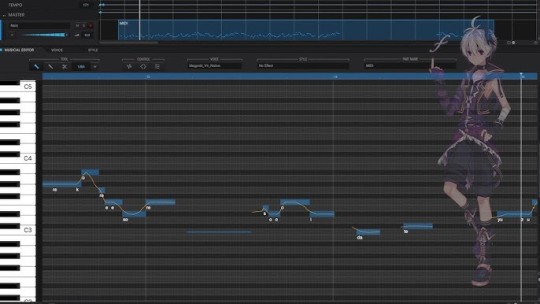
(Song: ID Smile by Toa; UST by K3RA; Cover by Shara Delvia)
The next edition of VOCALOID that was meant to change the playing field for vocal synth users. With an entirely new UI and never-seen-before features, VOCALOID5 was designed to simplify and enhance the overall vocal production and tuning process.
Pros:
Dark mode at last!
Unlike the previous editions where you had to purchase a voicebank to use VOCALOID, VOCALOID5 comes with four free voicebanks
Preset phrases that beginners can play with to learn how different vocal properties can result in different sounds
Preset “attack” and “release” pitch bend effects
Easy pitchbend and vibrato adjustment using the “style” and “emotion” tools
Automatic breaths
Can be used as a VST plugin in almost any DAW or as a standalone editor
Over a hundred style and voice colour presets (Rich, Husky, Hard; Melodic, Diced Up, Bent; Lead Vocal, Chopped, Pitched)
Tons of audio and mixing effects
Fixed breathiness parameter
Cons
Appears to be no longer up for purchase through normal means, YAMAHA has pulled it from the VOCALOID website to promote their newest engine, VOCALOID6
Does not support V2 or V1 VOCALOIDS
Does not support job plug-ins
Does not have the Cross-Synthesis parameter
Not worth the price
No piano roll tuning
youtube
VOCALOID6

(Song: Unknown Mother Goose by wowaka; VSQx and Tuning by me)
This is the most recent edition of VOCALOID that is up for purchase from the official website. With this installation of the VOCALOID software, the highly anticipated AI VOCALOID voicebanks have come into existence so that we can enjoy GUMI AI, ZOLA PROJECT AI, and Otomachi Una AI at last! It also comes with many other fresh features that were not present in VOCALOID5.
Pros:
Multilingual(Japanese, English, and Chinese) AI voicebanks!
A total of ten VOCALOID AI voicebanks
VOCALO CHANGER: works similarly to plugging an RVC model on top of an audio file, but legal
The doubling feature allows instant harmony creation
Fixed breathiness parameter
It can be used as a VST plug-in in most DAWs. or as a standalone editor
Included with the CUBASE AI DAW
Can be purchased at a cheaper price by upgrading from previous VOCALOID editions
Every feature that was present in VOCALOID5 is included in VOCALOID6!
Cons:
The AI voicebanks are of poorer quality compared to SynthesizerV; they are not easy to tune in the slightest, and you can only edit three parameters (pitch, pitch bend sensitivity, dynamics) unlike the normal VOCALOID voicebanks; not including the style presets
For the desired results in VOCALO CHANGER, the audio recordings must be clean without any flaws, otherwise the audio will sound distorted
Does not support V2 or V1 VOCALOIDs
Does not support job plug-ins
youtube
Piapro Studio V4x

(Song: Enjou Alice by Maiki-P; UST by KIRI; Tuning by Me)
Following its departure from YAMAHA, Crypton Future Media created a new vocal synthesizer to promote its new V4x Cryptonloid voicebanks. With its VSTi compatibility and E.V.E.C. feature, this software gave a new feel to tuning VOCALOIDs all while maintaining the features from the vocal synthesizers that were developed by YAMAHA.
Pros:
Bundles with Cryptonloids include Piapro Studio V4x and Studio One 6 for free; an incredible DAW
VOCALOID4 with a different, cleaner UI
Compatible with V2 (some of them), V3, and V4 voicebanks
Enhanced Cross-Synthesis parameter; now you can cross-synthesize two completely different VOCALOIDs (such as Hatsune Miku V4x Original with Megurine Luka V4x Hard)
E.V.E.C. with a press of a button; in VOCALOID4 you have to edit phonemes manually
Improved breathiness parameter
Ability to change the wallpaper of the piano roll and icons of voicebanks!
Can be used as a VSTi plug-in in most DAWs
Cons:
Does not support job plugins
Not all VOCALOID2 voicebanks are supported; such as Utatane Piko
Does not support NT voicebanks
Playback is not always on time with piano roll; you have to scroll as the vocals play unlike other softwares (this could be a glitch for me however)
No piano roll tuning
Can not run it through Studio One 6 (despite being included with the bundles), it can only function in Studio 5
youtube
Piapro Studio NT
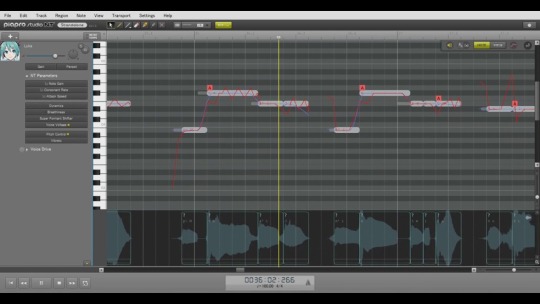
(Song: vivid by Utsu-P x Yuyoyuppe; UST by pifuyuu; Cover by AfiqTV)
Yes, Piapro Studio NT (an acronym for “new type”) is completely different from Piapro Studio V4x. This successor to the latter vocal synthesizer is entirely separate from YAMAHA, and was created for Crypton’s NT voicebanks. It no longer requires the use of a DAW, and was carefully designed with resynthesis technology for efficient vocal creation through the research that was conducted by the National Institute of Advanced Industrial Science and Technology (AIST).
Note: As of August 2024; Crypton has shifted their intention to release the other NT singers to getting back with YAMAHA to develop Miku V6 AI. We will be getting a Piapro Super Pack in a week (it is currently available for preorder). The package contains remastered versions of Miku V4x Original, Rin V4x Power, Len V4x Power, and Luka V4x Natural; along with V4 versions of KAITO and MEIKO. The former V3 voicebanks will come with growl features, and although there will be no appends, you can cross-synthesize any of the new Cryptonloids to produce unique sounds. In addition, Miku NT will be receiving a massive new update in the future.
Pros:
Piano roll tuning at last!
New accent feature and E.V.E.C
Comes with Vocal Drive Plugin for growl and scream effects
Cons:
Not compatible with VOCALOID voicebanks; Miku NT is the only usable voicebank to date
Harder to tune in
Missing parameters such as pitchbend sensitivity
Plugins are not compatible
youtube
SynthesizerV Pro
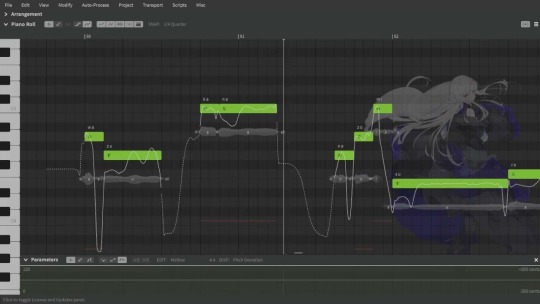
(Song: Underworld by niki (reverse); SVP and Tuning by PixPrucer)
This is the complete version of SynthesizerV Basic. It has suppressed VOCALOID in every way possible; from having insanely good AI voicebanks, to a multitude of features, this is probably the best paid vocal synthesizer available for purchase as of now. Honestly, I could only find a few downsides to this software because it’s that good, and one of them is more of a personal preference than a major issue. YAMAHA seriously needs to take notes from Dreamtonics.
Pros:
The synthesizer and voicebanks are much cheaper than any of the VOCALOID engines
Comes with Mai; an amazing female vocalist
Piano roll tuning
Auto-pitch tuning makes the pitchbending process much easier
Paid voicebanks come with THREE activation codes so they can be used on multiple devices
Allows scripts (basically plug-ins but for SynthesizerV)!
Cross-Lingual Synthesis; allows Japanese voicebanks to sing in English, English voicebanks to sing in Japanese, etc
Really complex phoneme customization
Vocal modes for full A.I. voicebanks
The audio to midi tool we’ve always wanted for VOCALOID; it turns wav. files into an amazing SVP (I know V3 has the Vocalshifter plugin… but it’s kind of trash in my opinion as it only works with Japanese lyrics and goes crazy with trying to copy the vocalist’s tone rather than just the pitchbends)
Frequent updates!
Cons:
As the voicebanks are ultra realistic, it’s not the best for those who enjoy more robotic voices, as seen in UTAU and VOCALOID
Crashes every now and then
Still no glottal effects
youtube
ACE Studio

(Image Source: https://support.acestudio.ai/article/62-3-2-the-main-ace-studio-screen)
ACE Studio is a newer AI vocal synthesizer. Like DeepVocal, it features characters that originated from other softwares such as Namine Ritsu, Luo Tianyi, Kurobousuku, Yuezheng Longya, and many others. It also has a heavy emphasis on Chinese vocals. Most importantly, Ace Studio had a mobile version called Pocket Singer!
Pros:
Piano roll tuning
Can cross-synthesize voicebanks to your liking to make your own vocal synth (Pocket Singer has a simple yet cute OC maker)
Simpler pitch editing
Cons:
Subscription based model on both platforms
Some of the voicebanks sound too similar to each other
Pitch editing on a phone is not fun
The phone number sign-in thing is a pain… why don’t these guys have my regional phone code as an option?!
One of the developers was exposed as a pedophile and proshipper; and some of the voicebanks used A.I. artwork; I personally don’t feel comfortable using a software made by people like this… ew
youtube
I’m just going to say it; SynthesizerV Pro is probably your best pick here, in terms of both price and versatility. You get so much out of this editor at a good cost, and it’s super easy to use! However, if you prefer robotic voices and can get your hands on it, then go with VOCALOID4 as it's pretty beginner friendly. If V4 is not an option, then you may have to deal with V6.
Now, even though the latter software is not as easy to use as the former, a new lightweight singing editor designed for V6 and V5 called TuneLab has been recently released! It allows for piano roll tuning, along with better cross-synthesis usage. I will cover this software in a later post as I am still trying to learn the ropes of it.
Finally, as I have stated in my other post, take my statements with a grain of salt. Pick whatever synthesizer you want based on your interest; whether it is a fun feature or a specific singer you like.
Hope this helps! In my upcoming post, I will recommend some VOCALOID voicebanks that are easy to use for beginners.
#Youtube#vocaloidproducer#vocal synth#vocaloid#music production#vocal synthesizers#synthv#synthesizer v#ace studio#piapro#crypton#hatsune miku#kagamine len#fukase vocaloid#vocaloid miku#miku#i know this is long im sorry for wasting your time#long post#vsynth#guide#fukase#len#yamaha
8 notes
·
View notes
Text
VOCALOID Cover - Enjou Alice (Alice Up in Flames / Alice on Fire) - Kagamine Len V4x Power
Hey guys, I know it’s been a while since my last post, but rest assured, I haven’t forgotten about this blog. I’m trying to research a couple of paid synthesizers as I don’t own them and don’t want to spread misinformation, so once I’m confident that I have enough material, I’ll publish it.
In the mean time, I thought I might as well promote some of my works here as a filler. Enjoy this trash rendition of a Maiki-P song.
Base UST: KIRI
Mix: Matthew Frostbite
Project Sekai! Colourful Stage PV Recording;: TigerCat111
Vocals: Len V4x Power/Serious + Fukase Japanese Normal + Kaito V3 Straight
VSQx + Harmonies + Extras + Tuning + Internal Screaming: hello there
youtube
#vocaloid#vocal synth#vocaloidproducer#vocaloid4#vocaloid cover#kagamine#kagamine len#len#kaito#kaito vocaloid#project sekai#vocal tuning#Youtube
6 notes
·
View notes
Text
Preliminary Considerations - Which Vocal Synthesizer Software is Right for You? - Free Softwares
Although this blog puts a major emphasis on the VOCALOID 4 editor, it, or VOCALOID in general, is not the only vocal synthesizer that exists. There are tons of other software that have the same function and a variety of different voicebanks, with some being cheaper and of higher quality than VOCALOID, or even free! That’s right, there are quite a few free vocal synthesizers out there (however the lack of frills may come at the expense of some missing features or difficulty of usage), which I recommend trying out before pouring your hard-earned savings on a program that you may not even use. What if you learn that you do not enjoy tuning or do not have the time to use the software? It would be a huge waste of money that could be invested in other stuff, such as basic necessities (GOOD FOOD) or other leisurely items, like video games, clothing from your favourite bands, art supplies, or merchandise. In addition, there has been a rise of a lot of smaller companies coming out with vocal synthesizers with incredible UIs that not only look appealing but are easy to navigate, and voicebanks that sound far too human and advanced than hATsUnE mIKU (don’t worry, I love Miku with all my heart, I am just trying to prove a point here). There are also some really sick features that you may not find in the franchises with bigger names.
In this post, I will be describing the features of different free vocal synthesizers and their advantages and disadvantages so you can find the one that meets your vocalo-p needs. Please note, I do not own all of these synthesizers, some of these are from reviews on Reddit and VocaVerse Network. In addition, some cons like lag could just be a me problem and better computers may not experience such issues. Also , I will not be covering every single singing synthesizer in existence, just the well known ones and those with proper UIs because there are so many. I am omitting NEUTRINO because it does not have a UI despite having such high-quality vocals, along with ALTER/EGO, as it does not have a piano roll.
UTAU
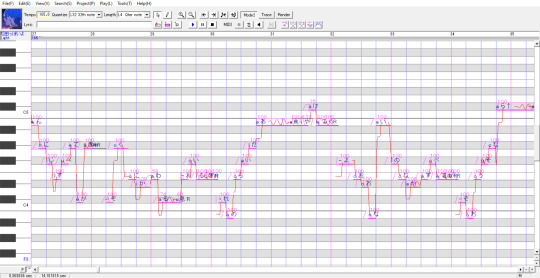
(Song: Meltdown by iroha(sasaki); UST: Tanjiro Taidana)
UTAU was designed to be the free sister software to VOCALOID. Not only can you use it without spending a cent, but it allows you to make your own voicebank as well! There are tons of popular voicebanks out there, including the Vipperloids, Gahata Meiji, Kohaku Merry, Matsudappoiyo, Denatsu Sora, Shuu Mawaine, and my personal favourite, SUZU.
Pros:
Almost every single voicebank is free to download
Different types of voicebanks (CV, VCV, CCVC; Monopitch vs. Multipitch; Power, Weak, Soft, Whisper, Growl, Screamo; tons of languages)
Can make your own voicebank right in the software
Pitch bending on the piano roll instead of a parameter box!
Variety of job plugins to make usage easier
Credited for its growl and vibrato handling
Cons:
EXTREMELY dated, UTAU has not been updated since 2013
Not friendly for beginners, especially due to its old UI
Need to change your system's locale, and installing voicebanks can be frustrating
Most voicebanks (namely Japanese) can only read Hiragana phonemes and not Romaji ones; but job plug-ins can fix this issue
youtube
Open Utau
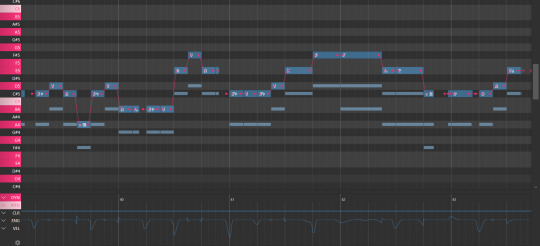
(Song: The Lost One's Weeping by neru; UST: Tanjiro Taidana)
If UTAU is the sister software to VOCALOID, then Open Utau is the younger sibling to normal UTAU. Open Utau is an open-sourced vocal synthesizer on GitHub with every feature in the original software while being easier to use.
Pros:
Dark mode with a sleek, easy-to-navigate UI!
Pitchbend with a click of a button; piano roll tuning is still consistent
Splice tool; useful for note-bending
No need to switch locale to Japanese
Easier to get the hang of
Frequent updates
Can use VSQXs and svps. without needing to convert them into USTs
Cons:
No Defoko…
Choppier and buggier than classic UTAU
Slow with rendering wav. files and launching the software
Phonemizers are tricky to work with, you don’t always get the same output as the same phonemizers in normal UTAU
External resamplers can cause overheating and slow down the software
Tuning is more dependent on job plugins than the original UTAU
Many users claim that otoing is easier in classic UTAU
youtube
SynthesizerV Studio Editor R1
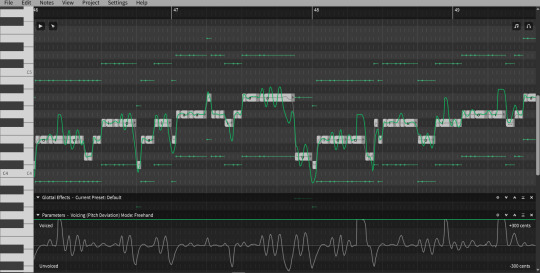
(Song: Tengaku by Yuuyu; VSQx by Adam Edmond)
This preliminary edition of SynthesizerV was a major breakthrough for the vocal synth community when it was first released. With its realistic-sounding voicebanks and minimalistic aesthetic, this software has changed the game by a landslide for synth users. Although it's quite limited, R1 was an amazing start for what will become a godly program in the future. Pros:
Pitch bending on the piano roll and in the parameter box (very smooth, I experienced no lag when using it nor did I have to make pitch points or pause while editing the parameters)!
Voicebanks sound quite human
MIND BLOWING GLOTTAL EFFECTS (nine different growls, two screams, and a vocal fry that do not sound robotic!)!
Really simple UI, easy to pick up, great for beginners!
Cons:
Outdated; is no longer being updated by Dreamtonics
Needs a recording license for commercial use (though I highly doubt it is still being upheld)
Only four voicebanks are available; Eleanor Forte, Yamine Renri, GENBU, and AiKO - who is paid and an outdated version of her R2 voicebank (R2 versions of the same voicebanks sound much cleaner and realistic)
A little too minimalistic; aside from the addition of glottal effects and the typical pitch deviation, loudness, tension, breathiness, voicing, gender, and vibrato parameters, there is not all that much you can do in this edition of the editor
youtube
SynthesizerV Studio Basic

(Song: Antibeat by Deco* 27; UST: Mayu Sama Desu)
Also known as SynthV R2, this is the free edition of the software that is currently being updated, despite having fewer features than its complete, paid version.
Pros:
Ready to play with as soon as it is installed
Twenty-five free voicebanks; sixteen Japanese, seven English, and two Chinese; all with unique sounds
AI voicebanks!
Instant mode; allows you to automatically tune the pitch of an entire track with the press of a button, although it may make the voice sound too pitchy
Waveform that allows you to see the volume and pronunciation of certain notes
Can use paid voicebanks in the free editor!
Just as easy to figure out as SynthV R1!
Cons:
Can only have a maximum of three vocal tracks in a single svp. file
Pitch bending is a lot more finicky compared to SynthV R1
Lite voicebanks sound mono-pitch
Lacks a ton of features that are available in SynthesizerV Pro; scripts, auto-pitch tuning, rap vocals, cross-lingual synthesis, vocal modes, alternate phoneme choices, and many other features are not included in the basic edition (even paid voicebanks can not use cross-lingual synthesis, vocal modes, etc)
The glottal effects parameter that was in SynthV R1 is sadly not included in both the Basic and Pro editions of the current program
youtube
VoiSona
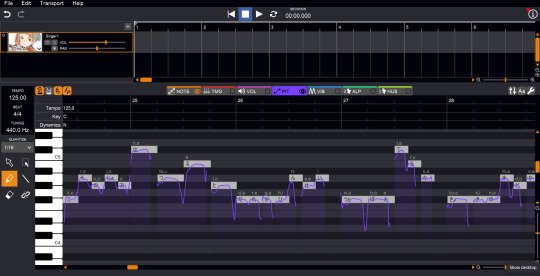
(Song: iNSaNiTY by Circus-P; VSQX: Cirty_09)
Previously named “CeVIO Pro”, VoiSona is a vocal synth that uses AI technology to create beautiful vocals with characters that originated from a variety of other vocal synthesizers (such as VOCALOID!) and are created with the recordings of talented singers and voice actors. CeVIO project has also launched a trial speech vocal synthesizer called “VoiSona Talk” for their first anniversary.
Pros:
Users get Chis-A’s full voicebank upon downloading the synthesizer!
The program itself is entirely free to download
AI technology makes tuning easier
Piano roll pitch-bending
Has some features that are missing in its sister software, CeVIO AI
The “husky” parameter is great for making whispers
Can be used as a VST plugin in most DAWs or a standalone editor
Cons:
All other voicebanks are paid; either you purchase the entire voicebank once, or get a subscription to use all of them
HEAVY LAG; the program is quite slow with processing commands
Free-hand pitch-bending is not as easy to perform compared to UTAU or SynthesizerV; can be quite sensitve and the AI may not always yield the desired result
youtube
DeepVocal
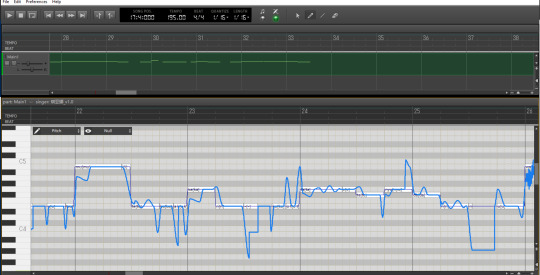
(Song: New Darling by MARETU; UST: Mimisan15)
The successor to the Sharpkey Galaxy software, this vocal synthesizer was designed for Chinese voicebanks. Its UI is a combination of VOCALOID4 and UTAU, giving it a sense of comfort and familiarity. Speaking of which, you can create your own voicebank in DeepVocal as you can in UTAU and OpenUtau, and there are some pre-made voicebanks of popular UTAUs, including Namine Ritsu, Inari Akane, and Kuro Bousuka. In addition, there is also a Kiana voicebank commissioned by MiHOYO and based on the protagonist of Gun Girls Z and Honkai Impact 3rd!
Pros:
Ready to use as soon as its out of the box
Great engine for Chinese voicebanks
Can create your own voicebank
Runs smoothly
Has all of the necessary parameters needed to create songs and covers
Cons:
Voicebanks can be kind of shaky, choppy, and more sensitive to pitch changes compared to other engines like UTAU and VOCALOID
Pitch bending can be quite clunky
Voicebanks may have difficulty reading certain phenomes from converted USTs; you may need to edit them if you don’t want lyrics being read as “a” or “ra”
youtube
These were all of the major free softwares I found, but if I come across another vocal synthesizer in the future, even if it is not talked about in the vocal synth community much, I may make a post about it.
I know there are a ton of cons I found for much of the vocal synths on this list and they sound like nitpicks on my part, but as I stated at the start of this post, some of these issues could be a Shimmer Thing™ and they may not arise for you when using these softwares. I won't be surprised if you read through this post and are now feeling thrown off by the various features and pros and cons of these programs, so here's my two cents on what I think beginners should go for:
If you like realistic voicebanks and want a very simple software to start with, get either SynthesizerV Editot (R1) or SynthesizerV Studio Basic (R2). If you would like to experience them (spicy) glottal effects and very kind pitchbending (like it does not make you want to bash your head against the wall because Renri won't cooperate) along with unlimited vocal tracks, then try out R1, and if you want more features, voicebanks, and continous updates, go for R2. Or even better, try out both and decide which one suits your interests better.
If you have a preference for robotic voicebanks, would like a variety of vocals to play with, and find plug-ins interesting, then UTAU may be for you, especially if you want VOCALOID but you can not afford it at the moment. Although I shitted more on Open Utau than I did on regular UTAU, I recommend the former over the latter as it is still being updated and the UI is signifcantly easier to navigate, along with its phenomenal pitchbending function.
Finally, please take my words with a grain of salt. If you like the voicebanks or are interested in a specific software, or discover one that is even better than any of the listed vocal synthesizers, by all means, go for it! This is just a surface guide by an idiot who spends most of their time trying to make Fukase not sound like a computer dying, and I have not used any of these softwares as much as I have messed with VOCALOID. Plus, my computer is an absolute bitch, so you guys will probably have much better luck than me.
I hope this guide was of use and provided a better insight on the various engines out there. My next post will compare different paid vocal synthesizers, including CeVIO AI, Piapro Studio, and of course, the various VOCALOID softwares. Don't worry, I'll get to the actual tutorial bit very soon.
Also, feel free to ask any questions about vocal synthesizers, or... literally anything! I'm practically starved for asks-
Thanks for reading!
#long post#vocal synth#vocalop#utau#synthesizer v#vsynth#open utau#synthv#deepvocal#voisona#chis a#kasane teto#eleanor forte#tanjiro taidana#vocal synthesizers#vocaloid#vocaloid resource#i know this is long im sorry for wasting your time
19 notes
·
View notes
Note
CANON CUS I SAID SO
Opinions on my fukalen au..?
Um so all the vocaloids live in a little cottagecore and cozy town and fukase owns the loc tavern and Len comes in every day, not to drink (Len can barely stomach alcohol) but to chat to fuka since he secretly has a massive crush on him ( I say secretly but in reality everyone knows Len has a massive crush on him) and fukase let's him stay after closing time and makes him non-alcoholic drinks
They're my queers
Ahhh I love them!! I’m sorry for answering this so late, I wanted to draw something for it I kept forgetting,,
But this is so real and true I believe in lightweight Len who sticks around just cuz he has a super obvious crush- they’re our queers now!
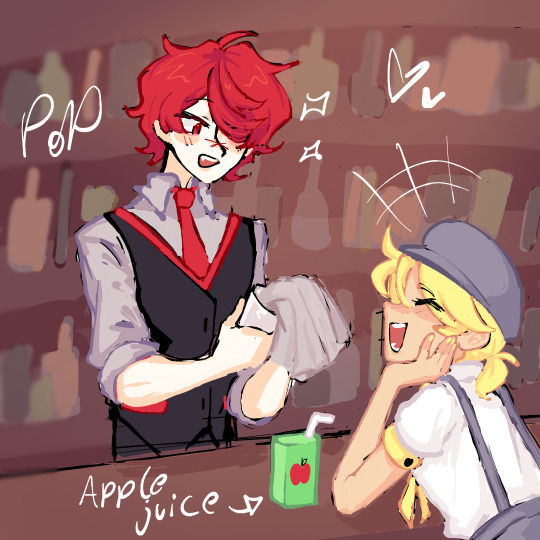
#vocaloid#vocal synth#kagamine len#len kagamine#fukase#vocaloid fukase#fukase vocaloid#len x fukase#lenkase#fukalen#fukase x len#cottagecore#lens a fuckin lightweight#i love gay people
57 notes
·
View notes
Note
(hi yu) not a vocaloid ask, but im here to say if you dont follow my friend here, i will eat everyones toes. so unless you want to be toe-less, follow @/shimmerloid-ai :)
hey bestie!
also yeah, ya'll better follow if you want to keep your toes intact >:D
0 notes
Note
Really useful guide for pitchbending in VOCALOID4 and VOCALOID5 as someone who doesn't pitchbend or uses V5.
id love some tuning advice... im so bad at it JEJDNDNMF
its all in the pitchbends, friend!
but first off SET AND SYNC YOUR FUCKING BPM CORRECT you need an external program to sync you bpm to your off-vocal file please view this video for more info (this is for utau but utau is just Vocaloid for poor people who love diy. i respect them.). do not do ANYTHING until this is set up or your life will suck.
i personally dont do any of my vsqs (or rather vprs because i prefer working with v5) starting in an external program, i only use them to sync up. but thats because i use vocaloid 5. vocaloid 5 (or at least the newest version) runs fast and its easier to move around notes and change things while the song is still playing, which v4 can NOT! so if you only have v4 and earlier versions, map out your stuff in an external program like in the video. fl studio works.

this is important, make your lengths large, as most songs don’t require 1/64th of a beat. use this to map out your base pitches.
like so

and you end up with this
super fucking boring. dont stop here. im begging you. dont stop here. nobody irl sings like this.
you need to mess around w/ singer parameters yes but you need to tune through pitchbends more importantly!
lets take this for example, its a simple melody in C Major:

Keep reading
65 notes
·
View notes
Text
WHAT BOOK IS THIS?!?!?
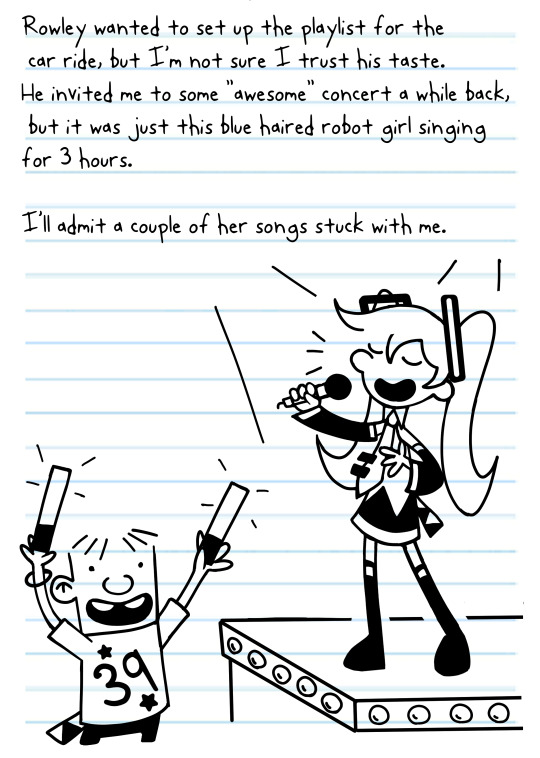
Rereading the books and huh??
3K notes
·
View notes
Text
Introduction - Vocal Synth Terminology - Part 2
This is a continuation of my previous post. I highly recommend checking that one out first before reading this post.
Append: This term was originally used to describe an additional voice library, originating with Hatsune Miku Append (shown below) and Kagamine Rin and Len Append. Appends provide vocal synths with different tones, such as Miku’s Soft append giving her a more gentle, breathy voice, and her Dark append, which provides her with a more mature, motherly tone. Now, the word “append” can be used for any vocal synth of a character that differs from their usual voice, such as Gumi’s “Adult” voicebank, though the correct word to address these voicebanks is just… voicebank. Proper appends are commonly seen among UTAU voicebanks, like Kasane Teto’s Weak Append, and Yamine Renri’s EDGE Append!

Fanloid: Also known as "derivatives", these are fanmade vocal synth characters. Fanloids do not have their own voicebanks, instead, their voices are made by editing the parameters of a pre-existing vocal synth. For example, Akita Neru (shown below) is a high-pitched Miku or a low-pitched Rin, Yowane Haku is a low-pitched Miku, Hatsune Mikuo is literally a gender-bend of Miku with the voicebank’s gender factor increased, and Honne Dell made with Kagamine Len with his gender and brightness factors lowered.
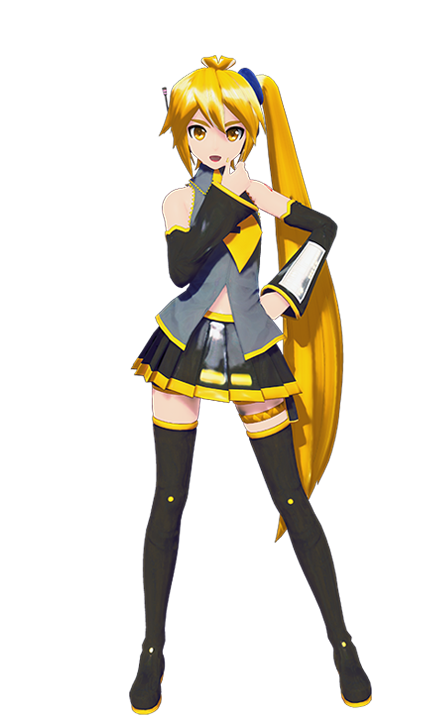
Realistic Voice Cloning: Also known as RVC, this phenomenon is loathed by every vocal synth user. If you have been on the internet since 2023ish, you have probably seen things like “Mr. Beast AI sings IDOL by YOASOBI” (shown below), or “Dio Brando sings Colleen Ballinger’s Apology”. These AI modules basically involve taking voice samples of a celebrity, fictional character, or literally ANYTHING, and creating a voice module that can sing any audio track provided to it. It should not be a big surprise that AI has made its way to the music industry as well, but as cool as they sound, most RVC modules are illegal and essentially harmful to the vocal synth community, and the music industry in general. People make these modules without the knowledge of the “voice providers” and gain a ton of views for doing LITERALLY NOTHING aside from mixing the vocal track with the instrumental, and often make money off of someone else’s voice. They could also make the module say something obscure, offensive, or lewd, and put the blame on the voice provider. I do not think we need to go into details about what is wrong with these consequences, but long story short, they fucking suck. The icing on the cake is that people would make AI modules of VOCAL SYNTHS as well, which is why most people think Miku is like Squidward AI or whatever. Not only does it harm the voice providers who put their time and effort into creating amazing voicebanks, but it also gives the public a nasty impression of the producer and cover artist community.
youtube
Jinriki UTAUs: Similar to the RVC phenomena, these are UTAU voicebanks that are made without the knowledge of the voice providers. Again, Jinrikis can be anything, from Mario to Baldi from Baldi’s Basics in Education and Learning, to a YouTuber or a LoveLive! character. Yeah… they can be quite cursed. Like RVC, these voicebanks can be considered illegal, however, it's not much of a problem if you keep these voicebanks to yourself, don’t run around advertising them, distribute them, or use them for commercial use. Jinriki voicebanks should not be confused with porting voicebanks (second video below) from other software, like putting MEIKO into Open UTAU. This is completely okay, so as long as you do not distribute them and port the voicebank yourself.
youtube
youtube
AI Voicebanks: These are actual paid voicebanks that use AI technology to enhance the quality of the vocals to make the tuning sound realistic and to make the overall tuning process much easier for producers. The AI technology would analyze the pitch deviation and other factors of a file and smooth out and clean up anything that sounds too flat or janky. In fact, even when a file is untuned are flat, AI voicebanks will try to create a smooth transition and can provide users with a nice start. As useful as they sound, sometimes these voicebanks can be unpredictable and not provide you with the desired output, but with a bit of practice you can create beautiful melodies with them. The popularity of AI voicebanks started with CeVIO and SynthesizerV, but now we have AI voicebanks in VOCALOID as well! However, the V6 voicebanks are… not exactly the best, but I will get into them in another post. The most popular AI voicebanks as of now are Chris-A (CeVIO + VOISONA), Eleanor Forte (SynthesizerV), KAFU (CeVIO + SynthesizerV), ONE (Synthesizer V), Megpoid Gumi AI (VOCALOID + SynthesizerV Studio), and recently, Kasane teto AI (SynthesizerV; shown below)!
youtube
Diffusion Singing Voice Conversion Model: Commonly known as Diff-SVC, this a program used to make AI voicebanks that works similarly to UTAU; you make a voicebank with your own singing, and use AI to make it into a voicebank that sounds human. These voicebanks are slowly “trained” to sound more realistic, and can produce beautiful vocals! These should not be mixed up with RVC modules as these voicebanks are either made by the voice providers or with their consent, and they have to be tuned like in any other synthesizer software.
youtube
Talkloid: These are commonly seen in memeish side of the vocal synth community. Basically, instead of making voicebanks sing, you tune them to make them talk. Talkoids are typically shitposts of vocal synths in bizarre scenarios (with a ton of swearing and Generation Z/Alpha jokes… some talkloids are really unhinged and/or cursed), but there are a few hidden gems such as cute conversations or stories tying to a producer’s lore about their favourite vocal synths.
youtube
youtube
PV: This acronym stands for Promotional Video. PVs accompany vocal synth songs and covers to enhance the listening experience . PVs can range from still artwork with lyrics underneath, to animatics and full-on animations.
youtube
Project Diva: A rhythm game series starring the Cryptonloids alongside Kasane Teto, Yowane Haku, and Akita Neru created by SEGA. Not only are they are known for their nightmarish beatmaps (looking at you, The Intense Singing of Hatsune Miku), but their stunning 3D PVs as well. Producers would often record PVs of the vocal synth of their choice in whatever costume they desire, and if the singer is a character who is not in the game, there are tons of mods on GameBanana (example with Otomachi Una shown below; the Teto AI Ghost Rule cover I posted above is another instance of this)!
youtube
Project Sekai! Colorful Stage!: Hell. Absolute hell. Just kidding, I have a strong feeling that you already know what this is, but in case you do not, Project Sekai! is a mobile rhythm game created by Sega and Piapro starring the Cryptonloids and five music groups of original characters, all with their own stories and songs. Like any other mobile rhythm game, you can pull for characters you want with gacha currency and participate in events that may or may not relate to the main story for prizes. A lot of new VOCALOID fans come from the Project Sekai! fandom, and although much of the fandom is a mess of entitled, bratty teenagers on Twitter, some people genuinely want a better understanding of how vocal synths work, softwares aside from VOCALOID, and songs aside from those in the game. This is one of the reasons why I made this blog, to properly explain how vocal synths work, and I hope this will give you a better understanding of this precious community. Also… I may add my EN ID to my about page. Maybe.
MikuMikuDance: Commonly known as “MMD”, this is a community-driven animation software. In MMD, you can create your own motions, cameras, stages, accessories and models, to create stunning PVs. You can also use other software like Blender to enhance your animations As the name implies, MMD was initially designed for VOCALOID and UTAU fans to create music videos of their favourite characters, but now it has evolved beyond great lengths. You are sure to find models and stages from your favourite video game or TV/anime series, and there are tons of motions and cameras out there. If you were in the vocal synth fandom in the late 2000s’, you may remember the MMD CUP series. These animations are an example of common memes people will make with this software, alongside PVs for Talkloids or a short motion of your favourite character doing whatever dance is currently popular on TikTok.
youtube
Digital Audio Workstation: Know by the shorthand “DAW”, these are softwares used for making music! DAWs are extremely versatile, allowing you to create a huge variety of projects in them. You can mix an exported wav. file of a tuned VSQx with an off-vocal track, edit audio in general, or use the virtual instruments to create your own arrangements and arrangements! In the vocal synth community, people do all of these things! The most popular DAWs include FL Studio (shown below), Studio One, Logic Pro, Cubase, Ableton Live, Reaper, Cakewalk, and Waveform! Unsurprisingly, DAWs are quite expensive, usually costing more than the actual vocal synthesizer as well. Not to mention, plug-ins can add additional expenses. When picking a DAW, it’s honestly better to pick quality over cost, all while seeing what fits your budget and needs. Oh, I’m going to regret exposing myself here, but in case anyone asks, I have no idea how to mix and probably will not make a tutorial on it. I have never used a proper DAW aside from Audacity and Soundtrap by Spotify, and those mixes turned out HORRENDOUS. Not to mention, I’m practically broke so I can’t invest in a good DAW. I’m trying to figure out how to use FL Studio 20 (the free, limited version of this software), but my smooth brain can not wrap my head around the process, even with two helpful tutorials I found. Plus, I do not have the time to learn. However, I may share some resources in the future relating to using a DAW from people with a brain cell, so keep your eye out for those. But I promise, the day I get decent experience in mixing is when I will make a guide on it.
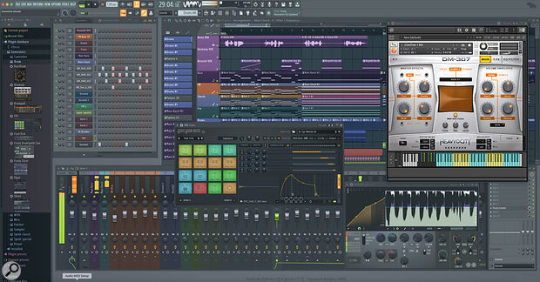
That is all of the definitions I can think of for now! I know I did not go over all of the parameters like "growl" and "cross synthesis", and that is because I will explain how all of the parameters work in a planned post. I also took some notes from Minnemi's video on basic VOCALOID terminology and the Vocaloid wiki. If I am able to think of any other important jargon later on, I will update this post. Thank you for reading this! I hope your knowledge on vocal synths has expanded, and I apologize for the huge post!
#vocaloid tutorial#vocaloid#vocal synth#vocaloidproducer#ai that are not paid voicebanks must die#mmdmikumikudance#mikumikudance#project diva#fanloid#synthesizer v#utau#long post#vocaloid resource
6 notes
·
View notes
Text
Introduction - Vocal Synth Terminology - Part 1
This post will be split into multiple parts due to Tumblr's character limit.
If you are new to the Vocal Synth community, you may encounter some words and phrases you don’t understand. For instance, someone may tell you about Rin and Len’s appends, and you may confuse that term for the difficulty in Project Sekai! Colorful Stage! Or may have heard someone discussing USTs, but can not find its definition anywhere nor figure out what the hell they are talking about.
Well, I made a dictionary of sorts to help newbie fans get used to Vocal Synth jargon. The keyword is “Vocal Synth” as these apply to other software as well. These definitions have a greater focus on the programs themselves than the characters.
Credits to Vocaloid Wiki and Minnemi on YouTube for some of these definitions.
Vocal Synthesizer: A digital instrument that creates tracks like any other DAW, but instead of piano notes, guitar strums, or drum beats, you compose vocals! Also known as “vocal synths”. Examples of vocal synthesizers include VOCALOID, UTAU, SynthesizerV, CeVIO, and Piapro Studio.
Voicebank: A collection of recordings of the sounds that make up a language. These sounds are typically vowels and constants, but depending on the voice bank, you may also get breath notes and pronunciation effects. Or, in simpler terms, the singers that are used in vocal synths! There are ton of voicebanks in the vocal synth community, with some of the popular ones being Hatsune Miku (VOCALOID + Piapro Studio), Kagamine Rin and Len (VOCALOID + Piapro Studio), Megurine Luka (VOCALOID + Piapro Studio), Kasane Teto (UTAU + SynthesizerV), Megpoid Gumi (VOCALOID + SynthesizerV + A.I. VOICE, FineSpeech Ver3), flower (VOCALOID + Gynoid Talk + CeVIO), IA (VOCALOID + CeVIO), and KAFU (CeVIO + SynthesizerV)! Individual vocal synth characters can also have different versions of their voice, such as Yuzuki Yukari’s Onn (soft) and Lin (power) voicebanks!
Voice Provider: The person whose voice that a voicebank is created. Voice providers record samples of their voice (specifically vowels and constants) at a certain key (for instance A3), which are turned into a voicebank with the company’s black magic (I’m kidding, I don’t know how they process and put the vocals together). For instance, PIKO is Utatane Piko’s voice provider, Satoshi Fukase is Fukase’s voice provider, and Naoto Fuga (shown below) is KAITO’s voice provider!

Crypton Future Media: The brains behind some of the most popular VOCALOIDs, which are Hatsune Miku, Kagamine Rin, Kagamine Len, Megurine Luka, KAITO, and MEIKO. Aside from voicebanks, they created games, concerts, merchandise, and much more relating to these beloved VOCALOIDS! Cryptonloids are… VOCALOIDS created by Crypton. Soon, Crypton departed from Yamaha and made its own vocal synthesizer in affiliation with another company called Piapro named Piapro Studio. There are two versions of this software; Piapro Studio NT and Piapro Studio V4x.
UTAU: A vocal synthesizer that is considered the “sister” software to VOCALOID. Unlike VOCALOID, this software is 100% free and you can create your own voicebank. There are thousands of UTAUloids at this point in time, giving you a huge selection of different ranges and strengths. Popular UTAUloids include Utatane “Defoko” Uta, Kasane Teto, Namine Ritsu, Momo Momone, Yowane Ruko, Sukone Tei, Rook, Gahata Meiji (shown below), Yamane Renri, Matsudappoiyo, Keine Ron, Kohaku Merry, Gekiyaku, Kazehiki, Adachi Rei, Ooka Mika, and so many others! There is also an open-source version of UTAU called Open UTAU, which is much easier to install and use (it has a dark mode!). Vipperloids are the classic UTAUloids that share surnames ending with “-ne” and their VOCALOIDish designs. These include Utatane “Defoko” Uta, Kasane Teto, Namine Ritsu, Momo Momone, Yowane Ruko, Sukone Tei, and many others.

SynthesizerV Studio: Also known as SynthV, this is a vocal synthesizer made by Dreamtonics that is well-known for its AI voicebanks. For a software that is smaller than VOCALOID, they are extremely advanced with realistic-sounding voicebanks, piano-roll tuning, rap vocals, and so many other features. It’s also much cheaper (thank you, Yamaha money sharks). In addition, Dreamtonics has two free versions; SynthesizerV Studio R1, and SynthesizerV Studio Basic R2. Popular SynthV voicebanks include Eleanor Forte, Kaorou Rikka, GENBU, Tsurumaki Maki, SAKI, SOLARIA, KEVIN (fan design by ivylare shown below), Stardust, ROSE, POPPY, and Kasane Teto Ai!
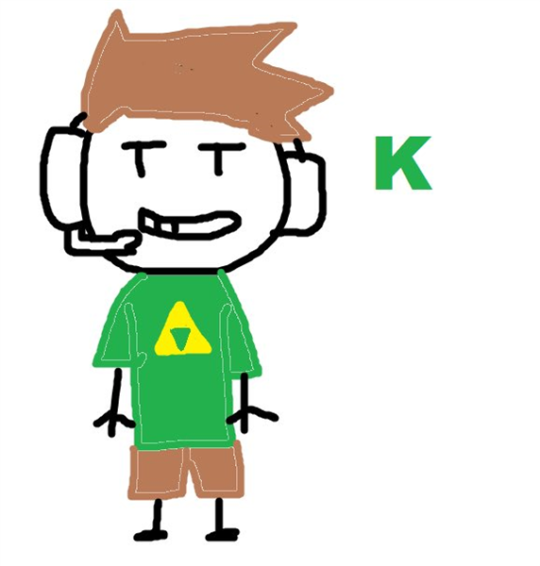
CeVIO Project: A collection of voice synthesizers created in collaboration with five different companies including Techno Speech and Frontier Works. Not only do they make vocal synthesizers, but their softwares have speech interfaces as well. As of now, their most popular program is CeVIO AI, a next-generation vocal synthesizer that uses AI technology to create powerful vocals as seen in SynthesizerV. Popular voicebanks include Chis-A (shown below), KAFU, Sato Sasara, IA AI, ONE, Yuzuki Yukari Rei, CiFlower, POPPY, ROSE, and many others.

Tuning: Essentially how you want a song or cover to sound. By editing the parameters of the individual notes and that of the voicebank itself (including the pitch, volume, strength, sharpness, and breaths), you can obtain an entirely different result of how the singer sings the encoded notes through different methods. This blog is dedicated to teaching people how to tune, so I’ll show a variety of tuning styles in the software.
V_: The VOCALOID software edition. As of now, there are six editions of the software, which are VOCALOID, VOCALOID2, VOCALOID3, VOCALOID4, VOCALOID5, and VOCALOID6. A lot of VOCALOID voicebanks would be named after the edition they were designed for, such as Gackpoid V4.
VSQ/VSQx/VPR/UST/SVP: The different vocal file formats through which the note, lyric, and tuning data are saved in different vocal synthesizers. These files are not exactly specific to a single editor as they can be converted to the appropriate formats:
VSQ: VOCALOID2 and VOCALOID3
VSQx: VOCALOID4
VPR: VOCALOID5 and VOCALOID6
UST: UTAU and OPENUTAU
SVP: SynthesizerV Studio
Phonemes: In linguistics and developmental psychology, phenomes are the smallest sounds of speech that distinguish one word from another. Similarly, in vocal synths, these are the building blocks of the individual lyrics that are read by the voicebank. Phonemes differ from the lyrics in a vocal synth file as the lyrics are the actual syllables in language while the phonemes are based on the X-SAMPA system. For instance, let’s examine and compare lyrics from “The Lost One’s Weeping” by neru to the phonemes that would be written in a vocal synth. Romaji lyrics (Source - Vocaloid Lyric Wiki): kokuban no kono kanji ga yomemasu ka? Romanji lyrics in VOCALOID4: [ko] [ku] [ba] [n] [no] [ko] [no] [ka] [n] [ji] [ga] [yo] [me] [ma] [su [ka] Phonemes in a vocal synthesizer VOCALOID4: [k o] [k M] [b a] [n] [n o] [k o] [k a] [n] [dZ i] [g a] [j o] [me] [m a] [s M] [k a] As we can see here, the phonemes of a song can differ significantly from the lyrics that are entered into a program. You can also edit the phonemes of a lyric for better pronunciation (for instance, for the word “you’d”, you can try [y M d]), or split them up into vowels and constants in notebending. In addition, there are entirely different phonemes for voicebanks designed for different languages; for instance, VOCALOID has Japanese, English, Chinese, Korean, and Spanish voicebanks. However, it is possible to make voicebanks sing in different languages, like how Utsu-P makes Miku V4 English sing in fluent Japanese. There are also phonemes for breaths, and glottal stops, as well as pronunciation effects that are exclusive to some voicebanks, like Enhanced Voice Expression Control (E.V.E.C.) in the V4x Cryptonloids. I will go into greater depth on phonemes in a future post.
Pitch bending: The effect where one note slides to another in a clean fashion without sounding flat. When people usually mention pitch bending in a vocal synth, they are referring to the tuning style where you alter the pitch using the “pitch bend” and “pitch bend sensitivity” parameters. If you have seen tuning streams or covers where people show their editors, you may have noticed dynamic and sometimes dramatic lines either on top of the notes or in a box beneath the piano roll. These are pitch bends! By drawing pitch curves in different ways, you can acquire different ways the notes are sung. You can then increase or decrease the pitch bend sensitivity of certain notes to change the factor of how many semitones the pitch curves will jump or fall by when the pitch bend parameter is brought to the maximum or minimum values. To paint a better picture of this concept, I made a quick VSQx of the "watashi" ([w a] [t a] [S i]). The curves on cutting through the green box are my pitch bends, and the thin red line running through the notes is the result. The transparent box behind it is my pitch bend sensitivity, which I increased for more sensitive in the [w a] and [t a] notes, and decreased for less for the [S i] phoneme.

Note bending: A tuning style where you manipulate the pitch by splitting notes into smaller notes. You can move the notes up and down or edit the phonemes to obtain different effects in notes. If you would like to breakdown the phrase [w a] [t a] [S i], you can write the notes out as [w a] [a] [a] [a] [a] [t a] [a] [S i [i] [i]! This is my preferred method of tuning as I do not enjoy drawing lines and like the nostalgic effect of the clean, slightly robotic sounds.

Portamento Timing: This term can have multiple definitions, but the general meaning is a slide from one note to the next. Do not confuse this for pitch bending as the way that notes transition in portamento is different from the former. In Vocaloid, portamento is a parameter that allows you to alter the timing of the pitch. Increasing the value would result in the pitch being more delayed, and decreasing it will cause the pitch to be sung earlier. In UTAU and SynthesizerV, portamento refers to the editable points in a pitch curve. Adding more points allows you to have more freedom in creating pitch bends.
Pitchsnap Mode: A setting in vocal synthesizers that causes the pitch curves to “snap” from one note to another. This setting yields a more autotuney and robotic tone in tuning. While I prefer to tune with this feature shut off, I have heard that the pitchsnap function makes pitch-bending much easier. Remember our "The Lost One's Weeping" example? Here is an amazing cover of it by our lord and saviour Jade S. with Fukase and Miku V3 Solid that showcases how beautiful the pitchsnap function can make the vocals sound when used correctly!
youtube
Mixing: A process of blending vocals with an off-vocal or instrumental so the singing fits in the environment of the vocal's music. It's more than just plugging in an audio track, you need to ensure that the vocals are cleaned up, are at an appropriate volume, and do not sound out of place. People can get super creative with mixing by adding reverb, radio-like effects, growls, and “adlibs” during instrumental breaks! All in all, the mixing of vocals is just as important as the tuning.
Producer: Anyone who makes music using vocal synths. This title was initially reserved for people who make original songs but can be used to describe cover artists like myself as well. Popular producers include ryo(supercell), kzlivetune, wowaka(shown below; Rest in Peace), neru, Deco* 27, and many others!

“-P”: Standing for “producer title”, this suffix originated from the IDOLM@STER fandom and refers to anyone who makes music with vocal synths, or in other words, vocal synth producers! For instance, why do we call Circus-P by his name with the "-P" suffix? Because that is what he is, a producer! You can also use the title “vocalo-p” to address synth users.

#vocaloid4#vocal synth#vocaloid#vocaloid tutorial#vocabulary#vocaloid jargon#long post#resource#dictionary#utau#utauloid#synthesizer v#synthv#cevio
32 notes
·
View notes
Text

ㅤㅤㅤㅤㅤㅤElectric angel
ㅤㅤㅤㅤㅤㅤㅤㅤㅤ.
ㅤㅤㅤㅤㅤㅤㅤㅤㅤ.
ㅤㅤㅤㅤㅤㅤㅤㅤㅤ.
Привет, я Old37, эта соцсеть - новая для меня. Я буду выставлять здесь свои работы. Выше - одна из моих работ. Мне нравится этот персонаж)
ㅤㅤㅤНадеюсь, мы подружимся)
4 notes
·
View notes





